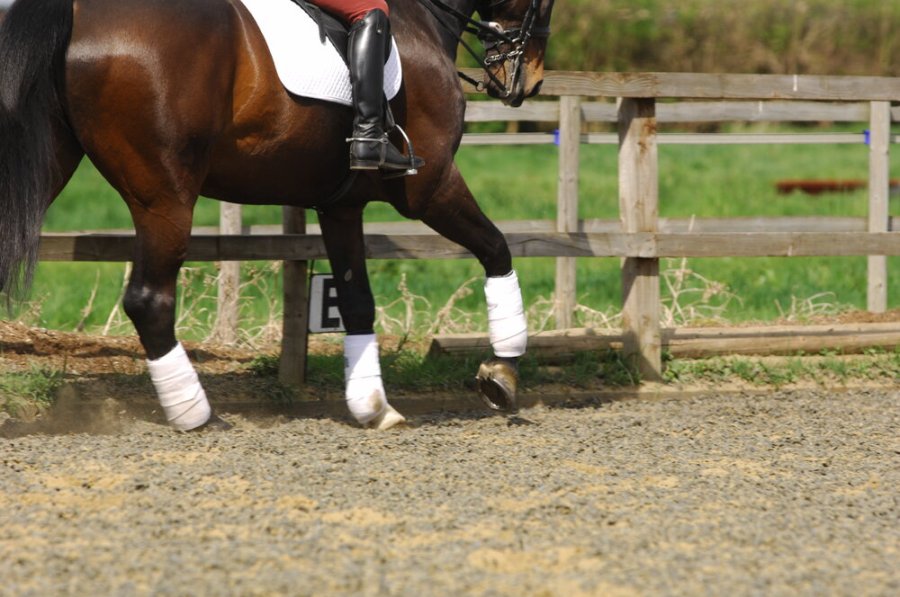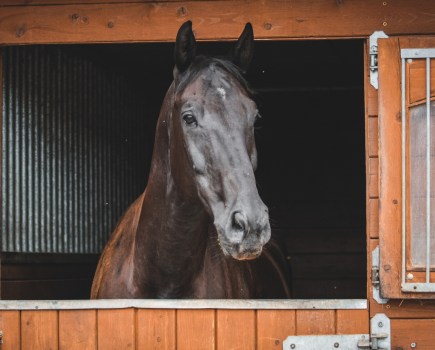When it comes to managing tendon problems we can learn from human athletes. After all these years it seems that box rest is out, while controlled exercise and a precision-based training regime are in, finds Jo Legh-Smith.
A tendon injury is every owner’s nightmare. In the past, recovery has involved months of trying to placate a frustrated animal on box rest with no guarantee of a return to full fitness. Now researchers and equine vets are learning from human sports medicine to offer horses better healing strategies.
“When it comes to tendon injuries, don’t rest. Strengthen,” says Dr Seth O’Neill, associate professor at the University of Leicester’s College of Life Sciences.
Tendon problems in horses generally arise from inflammation (tendinitis) or degeneration (tendinosis) in the mid-tendon – or a combination of the two. Lameness doesn’t always occur through inflammation, but also through degeneration, which explains why the typical approach of rest and anti-inflammatory medication (box rest and bute) can fail to resolve the issue.
“Put simply, [during everyday life] the body is constantly being strained or degenerated with activity, and repaired during rest,” says Seth, whose background is in human physiotherapy where he works and conducts research with elite athletes. “If you tip the rate of wear to be faster than repair, the tissue degenerates until the point at which it produces noticeable symptoms. Either that, or the tissue is so fragile that normal stresses actually cause damage.”
A wake-up call
Degenerative conditions of the tendon can be linked to changes in chemical, neural (nerve) and structural constituents. This sounds scary, but is, in fact, treatable – although not with rest as has been assumed in the past. Rest leads to tendon deterioration, much like muscle wasting – tendons are really just part of muscles; they can adapt positively or negatively given the right stress.
“A tendon twinge is a little wake-up call that should prompt a reduction and re-evaluation of the horse’s workload, followed by a gradual reintroduction of tendon stress – that is to say, physical exertion – throughout the recovery phase,” advises Seth. “If you rest the tissue, whether tendon or muscle, it degenerates through disuse, which is the opposite of what we want.
“Sometimes a gradual reintroduction of the previous workload alone isn’t sufficient and we need to use load/ training to make the tissue adapt better. This is why a varied workload is important, and most physios prescribe specific exercises to aid recovery.”
Unlike human athletes who can say exactly how they feel, tendon injuries in horses can be difficult to rehabilitate – after all, your horse can’t tell you what’s happening – and should include monitoring of pain, heavy and slow loading, and progressive resistance.
“Generally, tendon injuries in humans are caused by an imbalance of wear and tear,” says Seth. “Although carefully monitored and appropriate exercise causes tendons to become more resilient, the changes that result from exercise also have the potential for catastrophic failure, and it’s the same in horses.”
Key risk factors in horses include:
- Repetitive training without adequate rest
- Previous injury
- Too much training
- Poor surfaces
- Incorrect foot balance or shoeing
- Muscle weakness
Humans increasingly use electronic gadgets to precisely monitor exercise loading and other variables that provide useful feedback for successful recovery. Seth feels these would also be helpful in equine training, although they aren’t currently widely used by vets or owners.
Strength training
Seth suggests that owners don’t completely rest a horse with tendon strain, but focus instead on strength training. This builds stronger muscles around the tendon, thereby putting less strain on the tendon itself.
“Complete rest is harmful as it causes the tendon to waste,” says Seth. “We try not to rest human athletes. In humans we use strength training to rehabilitate muscle, which controls stress on the tendon, and the same is true for the horse.”
Exercises proven to strengthen equine muscles include hill work and steps, working up to longer durations over the course of three to six months. Meanwhile, Seth doesn’t encourage rubbing the area (which irritates), icing (cryotherapy), using non-steroidal anti-inflammatory drugs (NSAIDs) such as bute, or stretching.
“The tendon itself needs to be stiff, so stretching isn’t helpful,” he warns. “And ice actually slows down the tendon’s metabolic response to exercise, reducing tissue adaptation, and is only helpful for immediate recovery after exertion. It may even trigger a higher incidence of tendinopathy or prevent successful intervention. Stretching is also counter-intuitive because we need tendons to be stiff, not loose.”
If your horse does have a tendon injury, however, it is essential that you work on their recovery in consultation with your vet.
The road to recovery
- Repetitive training without enough rest leads to degradation and injury, so vary the workload and the type of surface you work on, and allow for turnout, rest days and light hacking. This isn’t just good for your horse’s mind, but also their physical recovery.
- Tendon rehab should include heavy and slow loading, pain monitoring, and progressive resistance (i.e. build up slowly, but do build up). Gentle hill work is good, but be careful with jumping and fast work.
- Monitor tendon health, load and recovery during training and throughout the season. Track and record data and use it to help you understand when to continue, reduce or stop exercise.
- Above all, don’t rest. Strengthen.
Dr Seth O’Neill was speaking at the Horses Inside Out Conference 2020.










